Maize is a heavy nutrient feeder; therefore, it withdraws huge amounts of nutrients from the soil for plant growth. Maize is a major crop for farmers in many parts of the world and a staple food for many subsistence farmers in the developing world. The nutritional requirements of Maize are very high, especially for nitrogen. Let’s check out the best fertilizer for Maize.
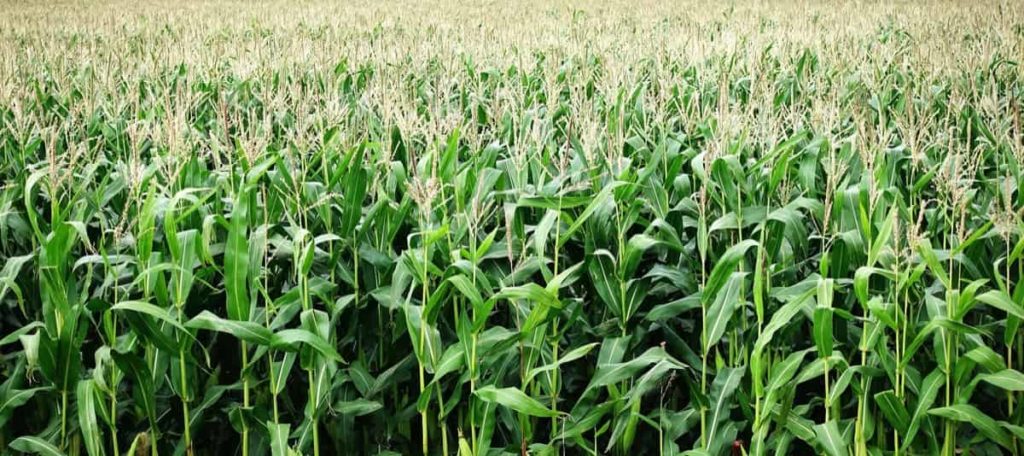
Inorganic fertilizers are commonly used to provide the Maize crop with the nutrients it needs. However, mineral fertilizers are often expensive, and over-reliance on them (excluding organic inputs) can harm soil biology, soil degradation leading and a loss in the long-term capacity of soils to sustain food production. An alternative to inorganic fertilizers is cow manure and which provides fertility and soil organic matter.
Best fertilizer for Maize
Fertilizer nutritional requirements
Fertilizer nutritional requirements for maize are based on expected yields and availability of soil nutrients. The Maize plant produces high dry matter yields and therefore requires nutrients, especially nitrogen (N), phosphorus (P), and potassium (K). It is usually not necessary to add fertilizer to meet all the nutritional requirements of the crop. Crops planted in paddocks that are in recent pastures can usually extract a significant portion of their nutritional needs from the soil.
The Maize plant is heavy food, which requires an intelligent fertilizer program. It needs a lot of nitrogen, phosphorus, potassium, and zinc. It responds very well to heavy nitrogen fertilization, in a concentration that usually causes the formation of other cereal crops. Replenish nutrients through the use of balanced fertilizers and integrated use of nutrients. These principles are not new to crop production, but they are important in light of the sharp rise in fertilizer prices and the elimination of subsidies.
In case you miss this: Simple Techniques to Increase the Maize Yield for Higher Profits
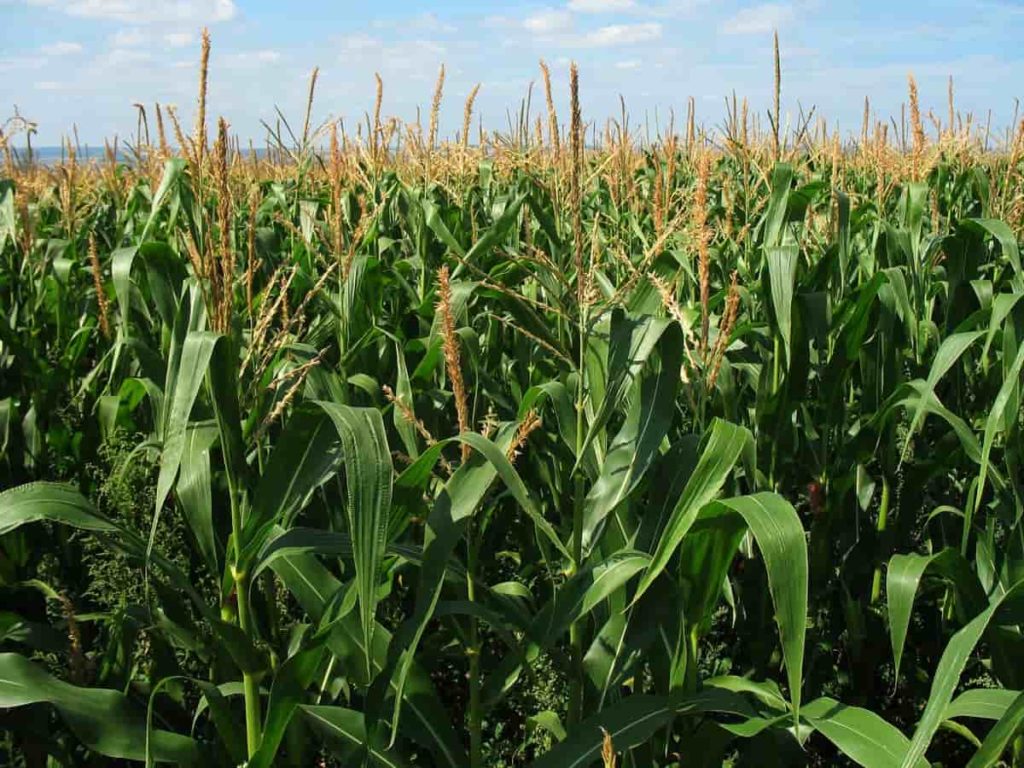
So, you need to be familiar with NPK and Zn nutrition and their management because they are not supplemented enough to produce the best Maize yield. Hybrid Maize is highly responsive to nutrient consumption and has a slightly higher nutritional value than other cereals due to its high yield potential. It can be grown in both organic and inorganic nutrient supplementation or through integrated nutrient management.
Maize crop nutrition and production
For maximum yield, the maize plant must grow fast once germination is complete. The amount of nutrients needed for rapid growth needs to be available. Maize needs the following nutrients for efficient growth and crop production.
Nitrogen
Nitrogen is the most limiting nutrient for Maize production. Apply nitrogen fertilizer based on minus credits of expected crop yields for soil residual nitrate, estimated nitrogen derived from minerals from soil organic matter, husk crop residue, and fertilizer or other organic waste and nitrogen present in irrigation water.
Nitrogen is the most important nutrient and role player in Maize crop growth, production, and quality. Nitrogen fertilizer is essential for good leaf growth. Smaller leaves result in less photosynthesis, a process required to store starch in grains. Thus, a nitrogen deficiency results in poor quality grain and reduced overall production. Nitrogen is important to get higher yields of maize. It fuels crop growth and needs to be readily available.
Phosphorus
Phosphorus is essential for the growth and development of the roots of the Maize plant, as it directly affects the growth of the plant. If phosphorus deficiency occurs in the early stages, it can affect plant growth throughout the life of the plant, resulting in smaller plants and lower crop yields. Phosphorus is especially important for root growth and good crop formation. Potassium, like nitrogen, also promotes crop growth and is picked up by growing plants in large quantities. Good potassium nutrition can also help reduce the effects of frostbite and reduce resilience.
In case you miss this: Organic Maize Farming, Cultivation Practices (Corn)
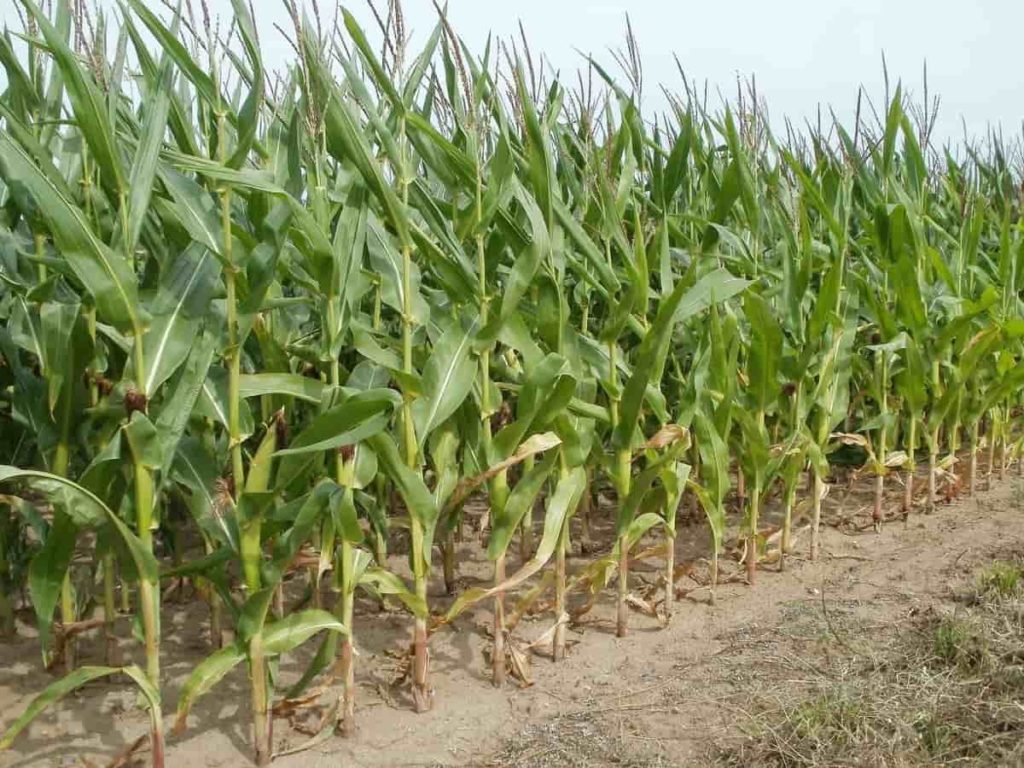
Potassium
Maize plants require large amounts of potassium, especially during maximum growth. Therefore, the soil needs to have an adequate amount of potassium as required for the optimal growth of maize plants. Potassium plays several roles in Maize plants, including regulating water intake (beneficial in dry seasons), transportation of sugar from the leaves, and maintaining plant rigidity. Potassium is the most important for stomatal closure and low supply results in loss of water from the plant.
- Magnesium, sulfur, and iron increase photosynthetic activity and maintain good growth for high crop yields in Maize.
- Calcium ensures good plant strength, protects root, leaf, and stalk production.
- Boron is required for pollen tube development and a good grain set.
- Zinc is important for photosynthetic activity.
- The unavailability of any other micronutrients may also limit the growth process and subsequent Maize production.
Compost manure
Appropriate use of organic manure such as well-decomposed compost or FYM at the rate of 10-12 tons per hectare approximately 25 days before sowing of the crop was found to be most ideal for increasing crop yield.
In case you miss this: Maize Seed Germination (Corn), Time Period, Procedure
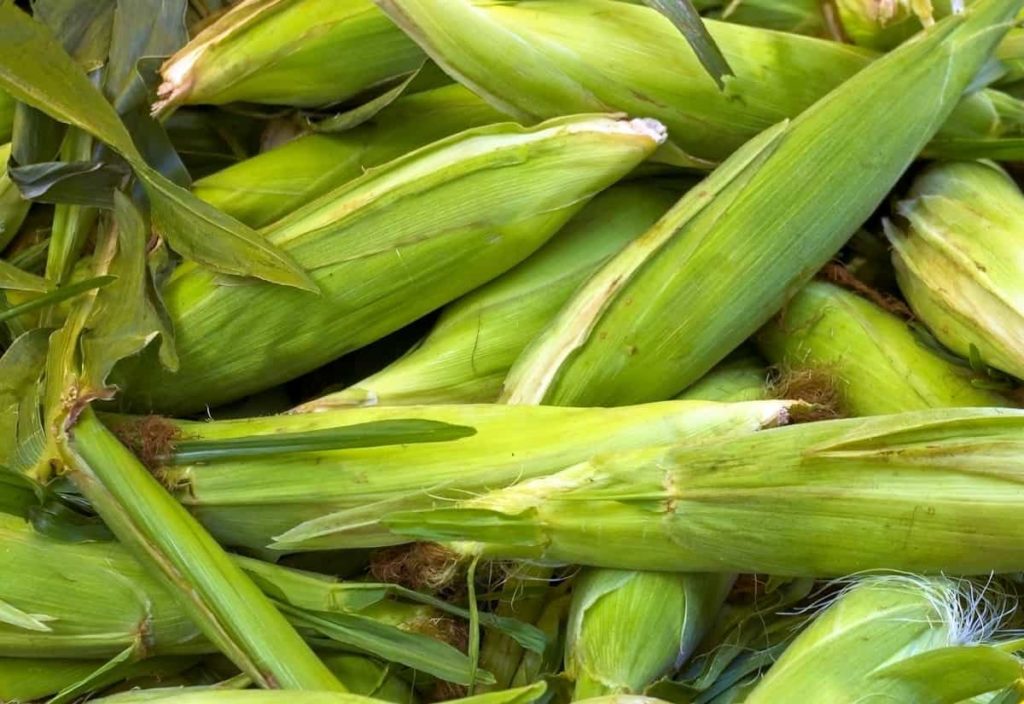
Fertilizers for irrigated maize
Application of FYM or compost
Spread 12.5 tons per hectare of FYM or compost or composted coir pith spread evenly on the uncultivated field and at the same time apply 10 packets of Azospirillum + 2 kg of Phosphobacteria per ha or Azophos at 4 kg/ha and incorporate in the soil.
Application
- In Maize crop, apply NPK fertilizers as per soil test recommendation. If soil testing recommendation is not available then adopt the recommendation of 135: 62.5: 50 NPK kg per hectare, ZnSO4 37.5 kg per hectare.
- Apply a quarter of N diet; a full dose of P2O and K2O before sowing.
- In the case of a ridge planted crop, open a 6 cm deep edge at a distance of two-thirds from the top of the ridge.
- Apply the fertilizer mixture evenly to the furrows and cover with soil to a depth of 4 cm.
- If the planting bed system is followed, open the 6 cm deep skins at a distance of 60 cm.
- Apply the fertilizer mixture evenly to the skins and cover with soil to a depth of 4 cm.
- When Azospirillum is used as seed and soil application, apply 100 kg N / ha (25% reduction in total N recommended by a soil test).
Fertilizer for rainfed maize
Application of FYM or compost
Spread 12.5 tons per hectare of FYM or compost or composted coir pith evenly spread on uncultivated field and apply 10 packets of Azospirillum (2000 g / ha) + 10 packets of Phosphobacteria (2000 g / ha) or 4 kg of Azophos hectare and incorporate in the soil.
In case you miss this: Maize Cultivation Income (Corn), Cost, Yield, Profit
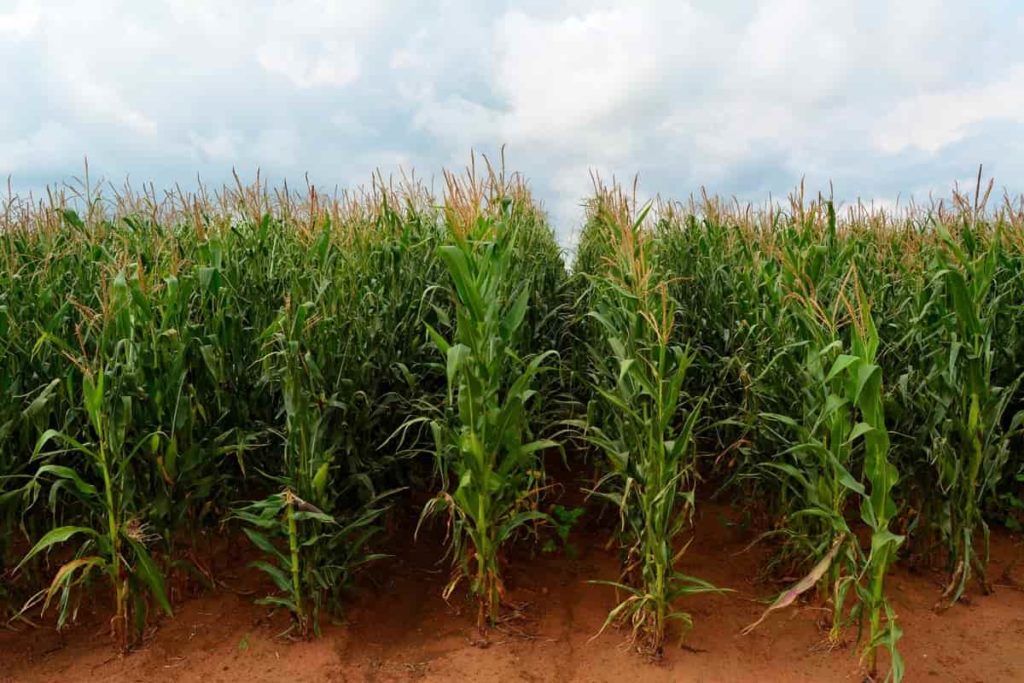
Application of fertilizer
- As far as possible apply NPK as per soil test recommendation. If soil testing recommendation is not available, follow the recommendation of a blanket of 60: 30: 30 NPK kg/ha for Alfisols and 40: 20: 0 NPK kg/ha for Vertisols.
- Apply half of N and full doses of P2O and K2O with enriched FYM as basal.
- Top dress remaining half of nitrogen at tasseling.
- Micronutrient mixture by 7.5 kg/ha as enhanced FYM. (Prepare enriched FYM at 1:10 ratio of MN mixture and FYM; mix at friable moisture and incubate for one month in shade).
Pre-treatment of seeds with biofertilizer
Seeds treated with fungicides can be treated with fungicides treated with three packets (600 g/ha) of Azospirillum + Phosphobacteia (600 g / ha) or Azosphos (600 g / ha).
For Hybrid Maize fertilizers
Apply 150: 75: 75 kg N, P2O5, and K2O per hectare.
Organic nutrient management
The following options should be used for nutrient management in organic maize production based on the availability of suitable compounds;
- Green manuring – Green manuring crops like dhaincha/sunhemp/cowpea 12/20/20 kg seed rate/acre respectively. About 50 days old crop is to be plowed down and reserve the field for 10 days for decomposition before sowing of maize.
- The straw of summer mungbean/cowpea may be buried before sowing of maize or/with Farmyard manure/Compost @ 6 tonnes/acre or vermicompost by 3 tonnes/acre.
- Application of Azatobacter/Azospirillum with PSB and NPK consortia for seed treatment by 200 g/acre or liquid formulation by 100 ml/acre.
- Soil application of Azatobacter/Azospirillum with PSB, VAM, and NPK consortia by 5-6 kg/acre.
- Paddy/wheat/maize straw compost at 0.18 tonnes/acre.
NPK fertilizer application
Nitrogen use efficiency is better in Rabi than in Kharif, mainly due to better water management and lower leaching losses. The available amount of farmyard manure should be applied before sowing, as a combination of organic manure and inorganic fertilizer gives better results than an application with fertilizer.
NPK dose of fertilizers
The amount of fertilizer applied depends mainly on the fertility of the soil and the management of the previous field. In general, balanced use of 120: 60: 40 kg/ha of NPK is recommended.
In case you miss this: Maize Farming Project Report, Cost, Profit Guide
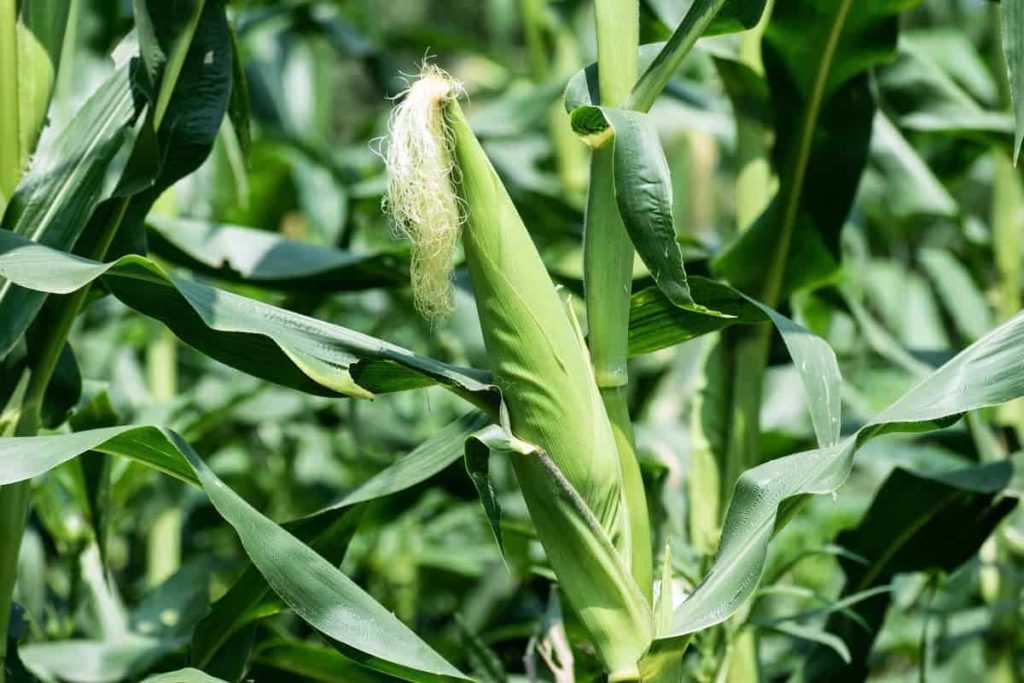
Method of fertilizer application
Apply a quarter of nitrogen and the total amount of phosphorus and potash before sowing. Apply the remaining nitrogen in two equal amounts. Half of the total nitrogen (60 kg N / ha) should be applied above the knee level, while the rest of the nitrogen should be applied along with the flag leaf.
Nitrogen in the form of urea should be carefully applied at a distance of 15-20 cm from the plants so as not to injure the leaves. The best response from nitrogen is achieved when the top dressing is covered with light soil after the application of fertilizer.
- Types of Pesticides Used in Agriculture: A Beginner’s Guide
- Economical Aquaculture: A Guide to Low-Budget Fish Farming
- 15 Common Planting Errors That Can Doom Your Fruit Trees
- How to Make Houseplants Bushy: Effective Tips and Ideas
- Innovative Strategies for Boosting Coconut Pollination and Yield
- Pollination Strategies for Maximum Pumpkin Yield
- The Complete Guide to Chicken Fattening: Strategies for Maximum Growth
- Natural Solutions for Tulip Problems: 100% Effective Remedies for Leaf and Bulb-Related Issues
- Revolutionizing Citrus Preservation: Towards a Healthier, Greener Future
- Natural Solutions for Peony Leaf and Flower Problems: 100% Effective Remedies
- Maximizing Profits with Avocado Contract Farming in India: A Comprehensive Guide
- Natural Solutions for Hydrangea Problems: 100% Effective Remedies for Leaf and Flowers
- The Ultimate Guide to Choosing the Perfect Foliage Friend: Bringing Life Indoors
- From Sunlight to Sustainability: 15 Ways to Use Solar Technology in Agriculture
- The Ultimate Guide to Dong Tao Chicken: Exploring from History to Raising
- The Eco-Friendly Makeover: How to Convert Your Unused Swimming Pool into a Fish Pond
- Mastering the Art of Delaware Chicken Farming: Essentials for Healthy Backyard Flocks
- 20 Best Homemade Fertilizers for Money Plant: DIY Recipes and Application Methods
- How to Craft a Comprehensive Free-Range Chicken Farming Business Plan
- Brighten Your Flock: Raising Easter Egger Chickens for Beauty and Bounty
- How to Optimize Your Poultry Egg Farm Business Plan with These Strategies
- Subsidy for Spirulina Cultivation: How Indian Government Schemes Encouraging Spirulina Farmers
- Ultimate Guide to Raising Dominique Chickens: Breeding, Feeding, Egg-Production, and Care
- Mastering the Art of Raising Jersey Giant Chickens: Care, Feeding, and More
- Ultimate Guide to Raising Legbar Chickens: Breeding, Farming Practices, Diet, Egg-Production
- How to Raise Welsummer Chickens: A Comprehensive Guide for Beginners
- How to Protect Indoor Plants in Winter: A Comprehensive Guide
- Ultimate Guide to Grow Bag Gardening: Tips, Tricks, and Planting Ideas for Urban Gardeners
- Guide to Lotus Cultivation: How to Propagate, Plant, Grow, Care, Cost, and Profit
- Agriculture Drone Subsidy Scheme: Government Kisan Subsidy, License, and How to Apply Online
- Ultimate Guide to Raising Araucana Chickens: Breed Profile, Farming Economics, Diet, and Care
- Bringing Hydroponics to Classroom: Importance, Benefits of Learning for School Students
- Ultimate Guide to Raising Polish Chickens: Breed Profile, Farming Economics, Diet, and Care
- Ultimate Guide to Raising Australorp Chickens: Profile, Farming Economics, Egg Production, Diet, and Care
- Silkie Chicken Farming: Raising Practices, Varieties, Egg Production, Diet, and Care
- Sussex Chicken Farming: Raising Practices, Varieties, Egg Production, Diet and Care
I want to know how to plant variety of vegetables in a small area to yield much outcome
What quantity of FYM is needed per maize